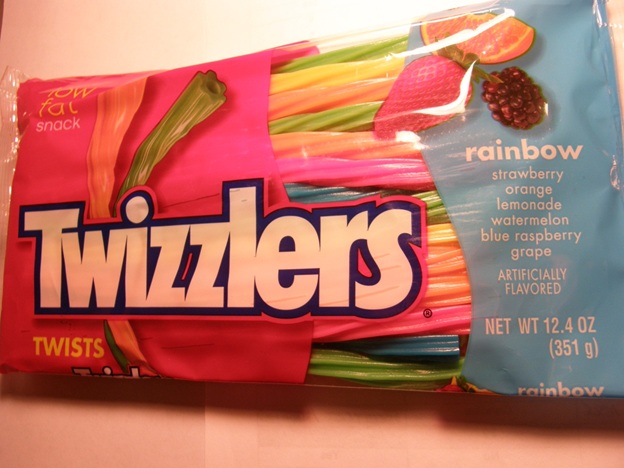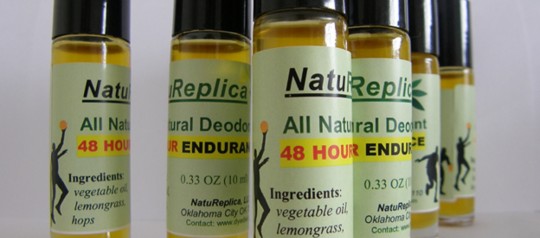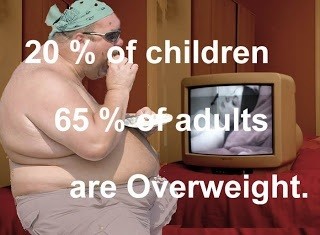Smart Guide To Food Dyes: Buying foods that can help learning
This Smart Guide was prepared by David Wallinga, M.D., Director of the Institute for Agriculture and Trade Policy’s Food and Health Program, with the assistance of Robin Schow. 2009. The original PDF file can be downloaded at the Institute’s website: http://www.iatp.org/files/421_2_105204.pdf
What makes Twinkies appear unchanged, even after months on the shelf? In part, it’s the food dyes. Some government-approved food dyes also cause hyperactivity in children, leading the British government to ask food companies to stop using them. Use IATP’s new Brain Food Selector TM to learn which of your child’s favorite foods contain these food dyes: www.HealthObservatory.org/BrainFoodSelector.
Industrialization and food dyes
 Industrialization of the food system, including a rise in food processing, has increased the use of food additives such as food dyes, preservatives and sweeteners. The FDA maintains of list of over 3,000 food additives, which includes those that are FDA-approved as well as those bypassing the approval process because the FDA has designated them as GRAS (generally recognized as safe).1 Scientists have long been concerned that synthetic food dyes and other additives may contribute to hyperactivity and other disturbed behavior in children.2,3,4
Industrialization of the food system, including a rise in food processing, has increased the use of food additives such as food dyes, preservatives and sweeteners. The FDA maintains of list of over 3,000 food additives, which includes those that are FDA-approved as well as those bypassing the approval process because the FDA has designated them as GRAS (generally recognized as safe).1 Scientists have long been concerned that synthetic food dyes and other additives may contribute to hyperactivity and other disturbed behavior in children.2,3,4
IATP’s focus is on food dyes. Nine synthetic food dyes, mostly petroleum-derived, are U.S.-approved for use in foods under the Food, Drug, and Cosmetics Act of 1938 (FD&C).5 (Pigments from natural sources are exempt from FDA certification.) Water soluble “dyes” are added to beverages, baked and dairy goods, and other products; non-soluble dye versions of the colors, called “lakes,” are used in hard candies, chewing gums and to coat tablets. Since 1990, all synthetic food dyes must be listed in food products by their common name.
Synthetic food dyes, purely cosmetic, are unnecessary—the only food additives for which this is true. Highly processed foods can lose natural color (as well as flavor and vitamins) with exposure to high temperatures, light, air and moisture. Post-processing, synthetic dyes are often added to offset the color loss.5 Other FDA-approved uses include:
• Coloring for otherwise colorless manufactured foods (e.g., lime sherbet);
• Making foods more “fun,” e.g., sprinkles or holiday candies;
• Enhancing natural (through weakly occurring) color (e.g., spraying Citrus Red No. 2 to make oranges seem more orange-like).
Not surprisingly, food dyes are common in foods specifically marketed to children, including many foods, dressings, treats and dipping sauces at fast food outlets.6
Rising children’s concerns
Over the last three decades, repeated studies have concluded that modest doses of synthetic colors added to foods can provoke hyperactivity and other disturbed behavior in children. The effect—contrary to popular conception—is not allergic; it does not appear more commonly in allergy-prone or “atopic” children.
In April 2008, Britain’s Food Standards Agency (FSA) advised the food industry to voluntarily ban the use of six common synthetic food dyes by 2009 (UK food dyes on which the Food Standards Agency has called for a voluntary ban include: Tartrazine, Quinoline Yellow, Sunset Yellow, Carmoisine, Ponceau 4R, and Allura Red).7
Usable alternatives clearly exist. Many British supermarkets have already cleared shelves of in-house brands containing these suspect dyes. Some global companies now sell two versions of their products: a version without food dyes for the UK, and a version with food dyes found to cause hyperactivity for the U.S.6,8,9
The immediate prompt for the British FSA’s decision was a 2007 government-funded study in The Lancet showing increased hyperactivity among nearly 300 children ages 3, 8 and 9 who were fed a mixture of the six suspect food dyes, plus the food preservative sodium benzoate.10 Hyperactivity worsened within about an hour of children ingesting the mixture.
Hyperactivity is a pattern of behavior—being overactive, impulsive and inattentive —that varies substantially across the population. But in this study, effects were seen not only among children diagnosed with Attention-deficit/hyperactivity disorder (ADHD), but also among children in the general population. Because science links child hyperactivity to problems with learning (especially reading), the study’s authors concluded that the increased hyperactivity triggered by these food additives could impair a child’s potential to learn in school. The study replicated findings in earlier studies as well.11, 12
Calls for a UK ban followed more than three decades of growing science associating exposure to food additives with a slew of potentially serious problems in children including not only hyperactivity, but also cognitive disturbances13,14 and compulsive aggression;15,16 asthma and hives;15,17 low-serum iron and zinc;15,17 and irritability and poor sleep.11,16,18
FDA-Approved Food Dyes For U.S. Manufactured Food19
FD&C Blue No. 1 – Brilliant Blue (dye and lake)
FD&C Blue No. 2 – Indigotine (dye and lake)
FD&C Green No. 3 – Fast Green (dye and lake)
FD&C Red No. 3 – Erythrosine (dye)
FD&C Red No. 40 – Allura Red (dye and lake)
FD&C Yellow No. 5 – Tartrazine (dye and lake)
FD&C Yellow No. 6 – Sunset Yellow (dye and lake)
U.S. food dyes
The U.S. differs from the UK in its exact list of approved food dyes. With the Food and Drug Act of 1906, the U.S. Congress sharply reduced the number of synthetic food dyes allowed in processed food from 80 to seven today (two additional synthetic food dyes are allowed for certain whole foods, like oranges).
Of these seven dyes, Sunset Yellow and Allura Red are two that were also subject to the UK voluntary ban. Appendix One summarizes the science around health concerns with child exposure to the FD&C food dyes currently approved in the United States.
The 1906 U.S. law was prompted by a series of discoveries dating back to the mid-19th century that metals such as lead, mercury and copper sulfate were being used to color candy, pickles, tea leaves and other foods, making people sick.
In 2008, based on recent science and the UK action, the Center for Science in the Public Interest (CSPI) petitioned the FDA to ban the use of existing food dyes in the U.S., and to require for the first time that new food additives be tested before going on the market for their toxicity to the brain and behavior.6 The petition also demands that the FDA remove the obviously false statement from its Web site that there is “no evidence that food color additives cause hyperactivity or learning disabilities in children.”5
IATP’s Brain Food Selector TM incorporated and expanded upon the CSPI petition’s listing of “Examples of Food Dyes in Processed and Restaurant Foods.”
Did you know?
• Synthetic food dyes are added not only to Fruit Loops and Popsicles, but also to butter, the skins of fruit and the casings of hotdogs.
• Mars has removed all artificial dyes from Starburst Chews and Skittles, and has begun removing all dyes from M&M’s in the UK but not in the U.S.8
• Kraft Lunchables do not contain artificial dyes in the UK,20 but do contain them in the U.S.9
Things you can do:
We know synthetic food dyes are unnecessary. So, while more study could shed light on the exact impacts of food dyes on children, we know enough right now to choose safer substitutes, whether as parents, consumers or as food companies.
• Eat whole foods (i.e., fresh vegetables, fruits, whole grains, healthy fats and protein/dairy). Whole foods are better for you, and allow you to avoid the inspection of food labels necessary to avoid toxic food dyes.
• At home or at restaurants, avoid foods with synthetic food dyes, especially if your child suffers from hyperactivity, ADHD, or other learning or developmental disabilities.
• Garden with your kids, visit a farm or join a CSA to help teach your children how ripe whole foods should actually look, smell and taste.
More things you can do:
• Call on the FDA to grant CSPI’s petition to eliminate synthetic dyes from our children’s food supply. Ask elected officials to do the same.
• Ask your child’s teachers, principals and school board members to allow only “brain foods” in schools (including vending machines)—i.e., foods free of synthetic dyes impacting children’s ability to learn and be healthy.
• File a report to be sent to the FDA if you think your child has been affected by food dyes. See http:// www.cspinet.org/fooddyes.
++++++++++++++++++++++++++++++++++++++++++++++++++++++++++++++++++++++++++++++++
References:
- U.S. Food and Drug Administration. Generally Recognized as Safe (GRAS): A food additive database. Available at http://www.accessdata.fda.gov/scripts/fcn/fcnNavigation.cfm?rpt=scogsListing
- Feingold, BF. Hyperkinesis and learning disabilities linked to artificial food flavors and colors. Am J Nurs. 1975;75: 797–803.
- Pollock I, Warner JO. Effect of artificial food colours on childhood behavior. Arch Dis Child. 1990; 65:74–77.
- Weiss B, et al. Behavioral responses to artificial food colors. Science. 1980; 207:1487-1489.
- U.S. Food and Drug Administration brochure: January 1993 Food Color Facts. Available at http://www.cfsan.fda.gov/~lrd/colorfac.html. Accessed June 23, 2008. In addition to seven food dyes used in food manufacturing, the FDA certifies Orange B specifically to color casings of frankfurters and sausages, and Citrus Red No. 2 to color the skins of oranges.
- Center for Science in the Public Interest. Petition to the Food and Drug Administration. Center for Science in the Public Interest Web site. Available at: http://cspinet.org/new/pdf/petition-food-dyes.pdf. Accessed August 22, 2008.
- Food Standards Agency. Board discusses colours advice.Food Standards Agency Web site. Available at http://www.food.gov.uk/news/newsarchive/2008/apr/coloursadvice . Accessed October 31, 2008.
- Mars, Incorporated. Information on artificial colours. Mars, Incorporated Web site. Available at http://marsconsumercare.co.uk/additives.asp. Accessed February 10, 2009.
- Kraft Foods Inc. Oscar Mayer Lunchables–Ingredient list. Kraft Foods Web site. Available at http://www.kraftfoods.com. Accessed August 12, 2008.
- McCann D, Barrett A, Cooper A, et al. Food additives and hyperactive behaviour in 3-year-old and 8/9-year-old children in community: a randomized, double-blinded, placebo-controlled trial. Lancet. 2007; 370:1560–67.
- Schab D, Trinh N. Do artificial food colors promote hyperactivity in children with hyperactive syndromes? A meta-analysis of double-blind placebo-controlled trials. J Dev Behav Pediatr. 2004; 25:423–34.
- Bateman B, Warner JO, Hutchinson E, et al. The effects of a double blind, placebo controlled artificial food colourings and benzoate preservative challenge on hyperactivity in a general population sample of preschool children. Arch Dis Child. 2004; 89:506–511.
- Conners CK, Goyette CH, Newman EB. Dose-time effect of artificial colors in hyperactive children. J Learn Dis. 1980; 13(9):48–52.
- Swanson JM, Kinsbourne M. Food dyes impair performance of hyperactive children on a laboratory learning test. Science. 1980; 207:1485–87.
- Ward NI, Soulsbury K, Zettel V, et al. The influence of the chemical additive tartrazine on the zinc status of hyperactive children–a double-blind placebo-controlled study. J Nutr Med. 1990; 1:51–57.
- Sarantinos J, Rowe KS, Briggs DR. Synthetic food colouring and behavioural change in children with attention deficit disorder: a double-blind, placebo-controlled, repeated measures study. Proc Nutr Aust. 1990;15:233.
- Ward NI. Assessment of chemical factors in relation to child hyperactivity. J Nutr Envir Med. 1997; 7:333–42.
- Rowe KS, Rowe KJ. Synthetic food coloring and behavior: a dose response effect in a double-blind, placebo-controlled, repeated-measures study. J Pediatr. 1994; 125:691–98.
- Rung International. Primary food colors. Available at http://www.foodadditivesworld.com/products/fdc-colour.html. Accessed February 10, 2009.
- BBC News. Kraft cuts dairylea fat and salt. BBC News Web site. February 9, 2007. Available at http://news.bbc.co.uk/1/hi/business/6345205.stm. Accessed February 10, 2009.
++++++++++++++++++++++++++++++++++++++++++++++++++++++++++++++++++++++++++++++++
Appendix
| Health Endpoints of Concern | Food Coloring | Reference(s) |
| Hyperactivity | FD&C Yellow No. 5FD&C Yellow No. 6FD&C Red No. 40 | Pollock and Warner, 1990Bateman, et al., 2004McCann, et al., 2007Schab and Trinh, 2004 |
| Compulsive aggression/violent behavior | FD&C Yellow No. 5 | Ward, 1997 |
| Eczema, hives | FD&C Yellow No. 5FD&C Yellow No. 6 | Ward, 1990Ward, 1997 |
| Asthma | FD&C Yellow No. 5FD&C Yellow No. 6 | Ward, 1990Ward, 1997 |
| Cognitive disturbances | Combination of nine artificial food dyes | Swanson and Kinsbourne, 1980 |
| Irritability | FD&C Yellow No. 5 | Swanson and Kinsbourne, 1980 |
| Sleep disturbances/insomnia | FD&C Yellow No. 5 | Schab and Trinh, 2004Rowe KS and Rowe KJ, 1994 |
| DNA damage in gastrointestinal organs, colon and urinary bladder in mice | FD&C Yellow No. 5FD&C Red No. 40FD&C Red No. 3 | Sasaki YuF, et al., 2002Moutinho ILD, Bertges LC, et al., 2007 |
| Thyroid tumors in rats | FD&C Red No. 3 | Hiasa Y, et al., 1979 |
| Neurochemical and behavioral effects (inhibits neurotransmitters, i.e., dopamine) | FD&C Red No. 3 | Lafferman, 1979 |
| Reduced serum & saliva zinc levels (increased susceptibility to infection and impaired cell-mediated immunity) | FD&C Yellow No. 5 | Ward, et al., 1990Ward, 1997 |
Sources for Appendix:
- Bateman B, Warner JO, Hutchinson E, et al. The effects of a double blind, placebo controlled artificial food colourings and benzoate preservative challenge on hyperactivity in a general population sample of preschool children. Arch Dis Child. 2004;89:506-511.
- Conners CK, Goyette CH, Newman EB. Dose-time effect of artificial colors in hyperactive children. J Learn Dis. 1980; 13(9):48-52.
- Hiasa Y, Ohshima M, Kitahori Y. The promoting effects of food dyes, erythrosine (red 3) and Rose Bengal B (red 105), on thyroid tumors in partially thyroidectomized N-Bis(2-hydroxypropyl)- nitrosamine-treated rats. J Cancer Res. 1988; 79:314-19.
- Lafferman JA, Silbergeld EK. Erythrosin B inhibits dopamine transport in rat caudate synaptosomes. Science. 1979; 205(4404):410-12.
- Moutinho ILD, Bertges LC, Assis RVC. Prolonged use of food dye tartrazine (FD&C yellow no. 5) and its effects on the gastric mucosa of Wistar rats. Braz J Biol. 2007; 67(1):141-45.
- Pollock I, Warner JO. Effect of artificial food colours on childhood behavior. Arch Dis Child. 1990; 65:74-77.
- Rowe KS, Rowe KJ. Synthetic food coloring and behavior: a dose response effect in a double-blind, placebo-controlled, repeated-measures study. J Pediatr. 1994; 125:691-98.
- Sarantinos J, Rowe KS, Briggs DR. Synthetic food colouring and behavioural change in children with attention deficit disorder: a double-blind, placebo-controlled, repeated measures study. Proc Nutr Aust. 1990; 15:233.
- Sasaki YF, Kawaguchi S, Kamaya A, et al. The comet assay with eight mouse organs: results with 39 concurrently used food additives. Mut Research. 2002; 519:103-119.
- Schab D, Trinh N. Do artificial food colors promote hyperactivity in children with hyperactive syndromes? A meta-analysis of double-blind placebo-controlled trials. J Dev Behav Pediatr. 2004; 25:423-34.
- Swanson JM, Kinsbourne M. Food dyes impair performance of hyperactive children on a laboratory learning test. Science. 1980; 207:1485-87.
- Ward NI, Soulsbury K, Zettel V, et al. The influence of the chemical additive tartrazine on the zinc status of hyperactive children – a double-blind placebo-controlled study. J Nutr Med. 1990; 1:51-57.
- Ward NI. Assessment of chemical factors in relation to child hyperactivity. J Nutr Envir Med. 1997; 7:333-42.
- Weiss B, Williams JH, Margen S, et al. Behavioral responses to artificial food colors. Science. 1980; 207:1487-89.
Category: FDA food regulations, Food and Risk, Food Dyes Exposure






